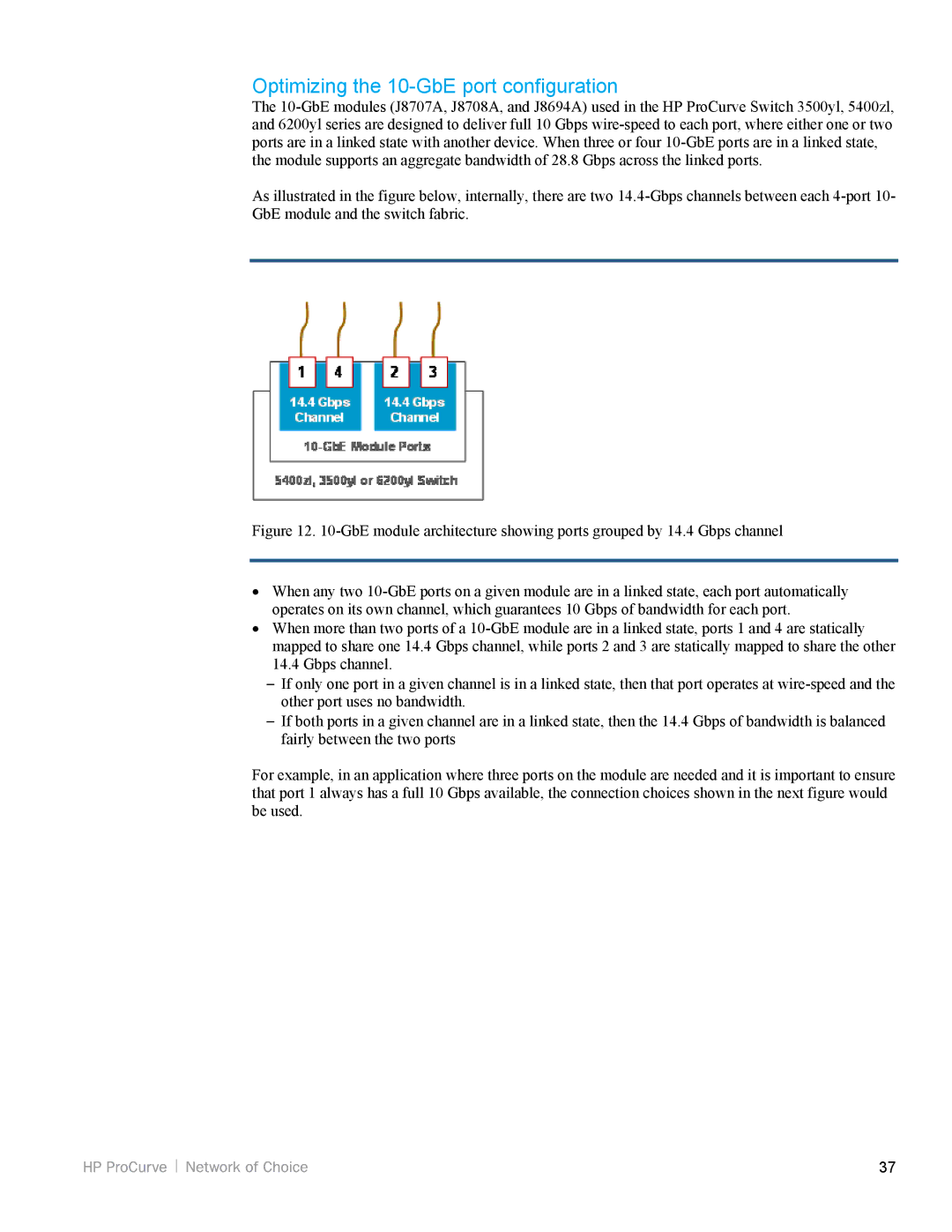
Optimizing the 10-GbE port configuration
The
As illustrated in the figure below, internally, there are two
Figure 12. 10-GbE module architecture showing ports grouped by 14.4 Gbps channel
•When any two 10-GbE ports on a given module are in a linked state, each port automatically operates on its own channel, which guarantees 10 Gbps of bandwidth for each port.
•When more than two ports of a 10-GbE module are in a linked state, ports 1 and 4 are statically mapped to share one 14.4 Gbps channel, while ports 2 and 3 are statically mapped to share the other 14.4 Gbps channel.
–If only one port in a given channel is in a linked state, then that port operates at wire-speed and the other port uses no bandwidth.
–If both ports in a given channel are in a linked state, then the 14.4 Gbps of bandwidth is balanced fairly between the two ports
For example, in an application where three ports on the module are needed and it is important to ensure that port 1 always has a full 10 Gbps available, the connection choices shown in the next figure would be used.
37
